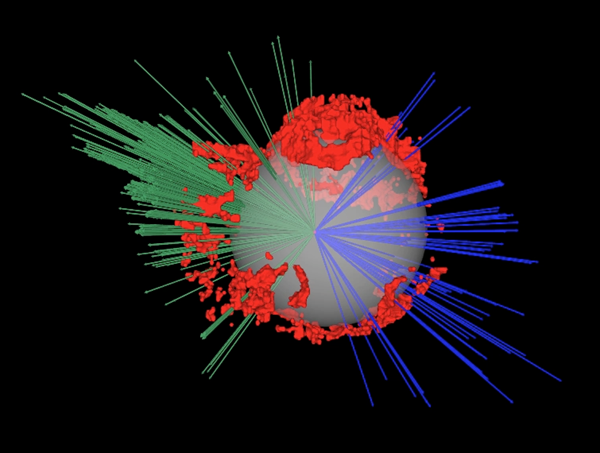Astronomers Dan Milisavljevic of the Harvard-Smithsonian Center for Astrophysics in Cambridge, Massachusetts, and Robert A. Fesen of Dartmouth College in Hanover, New Hampshire, took nearly 14,000 individual measurements of Cas A and from this rich data set created a 3-D reconstruction of the remnant. The three movies presented here are the results of their study, which originally appeared in the August 1, 2013, issue of The Astrophysical Journal (volume 772, page 134).
The first movie starts off by depicting some 10,000 data points in the remnant’s main shell. The researchers then rotate this reconstruction about the north-south and then east-west axes. They then repeat these views after adding a translucent sphere that helps viewers distinguish between the front and back material. Next, the researchers add data points representing the remnant’s outer knots. Finally, they show a Hubble Space Telescope image of the remnant to relate their 3-D reconstruction to how the remnant appears in the sky. During this segment, blue represents material coming toward Earth and red material moving away.
The second movie shows arrows representing the northeast (green) and southwest (blue) knots of ejecta along with the main-shell material (red). The sulfur-rich knots move at exceptionally high speeds — up to 9,000 miles per second (almost 15,000 kilometers per second).
The third movie depicts iron-rich ejecta (blue), which shines mostly at X-ray energies, with respect to the optically emitting main-shell ejecta (red). The optical rings discussed in the Astronomy article coincide nicely with the X-ray emitting iron, which suggests a cause-and-effect relationship.










